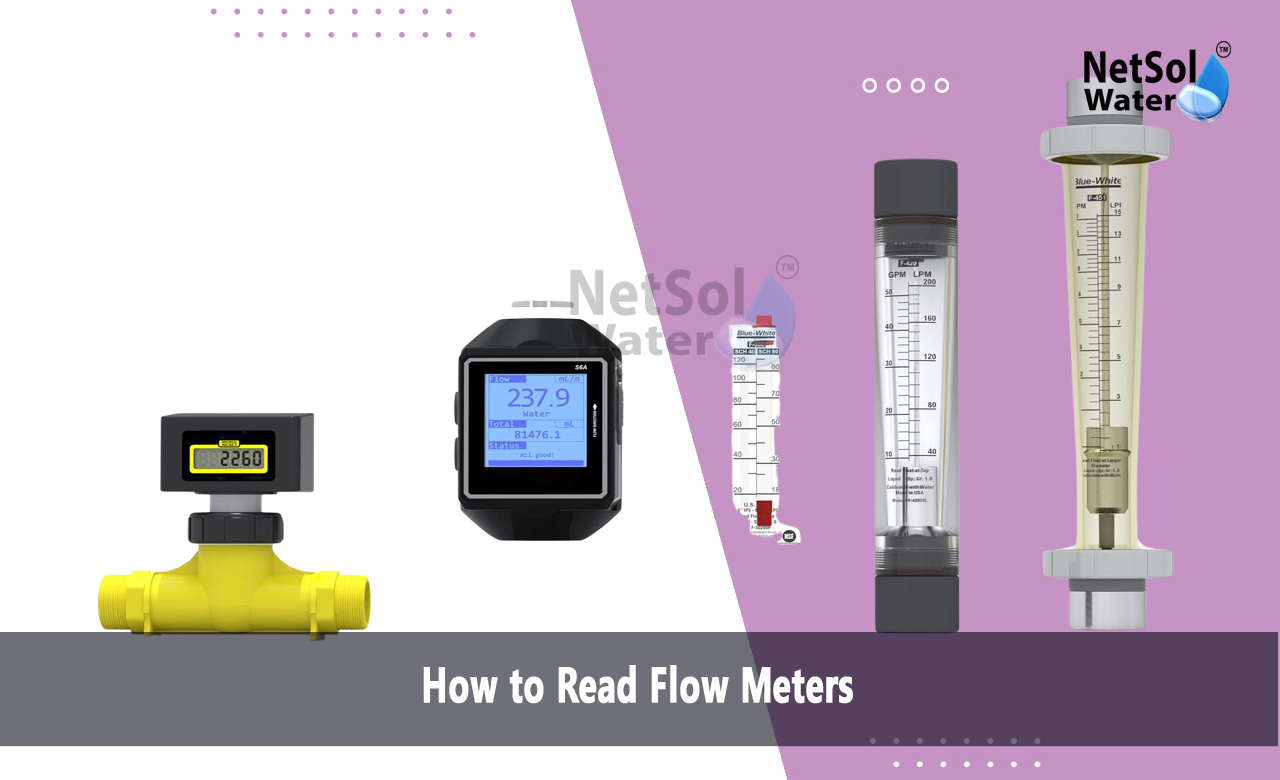How to Read Flow Meters?
Flow meters are utilized devices in several industries, such as water treatment, manufacturing, and chemical processing, to quantify the liquid or gas flow rate through a system. Learning the right method to read a flow meter ensures proper system functioning and identifies any abnormalities that can impact performance.
The manual will describe the fundamentals of flow meters, their categories, and reading accurately to measure precisely.
What is a Flow Meter?
A variable area flow meter is a flow meter used in the measurement of the weight or volume of the fluid in the pipe. They give immediate response to the operators so that water consumption, leaks, and the efficiency of the system can be monitored. The flow meters have wide applications in wastewater treatment plants, reverse osmosis plants, and in industrial processing.
Types of Flow Meters and How to Read Them
Rotameter (Variable Area Flow Meter)
A rotameter is a vertical transparent tube with a float that moves up or down within it with the flowing fluid depending on the flow rate. The flow rate is indicated by the position of the float since the design is such that the float can be raised against gravity by the fluid. Because rotameters are not power-driven, they are widely used for low-cost and uncomplicated flow measurement.
Common Applications
· Water treatment plants
· Industrial process gas flow measurement
Usage
· Watch the float in the tube.
· Read the flow rate at the center of the widest part of the float (not top or bottom).
· Make sure the rotameter is mounted vertically to read properly.
Digital Flow Meter
A digital flow meter uses electronic sensors to detect fluid flow and display it on a screen. Some employ ultrasonic waves, some magnetic fields or mechanical elements to calculate flow rates. Digital flow meters give instantaneous readings and many have other features like total volume measurement and flow rate alarm.
Typical Applications
· Reverse osmosis (RO) plants
· Effluent treatment plants
· Industrial liquid monitoring
How to Read
· Observe the electronic display for flow rate (LPM, GPM, or m³/h).
· If present, observe other data such as total volume and pressure levels.
· Check that the meter is calibrated and the battery is working.
Ultrasonic Flow Meter
Ultrasonic flow meters utilize high-frequency sound to detect the velocity of a fluid. Ultrasonic signals are sent and received by sensors mounted on the pipe, and the time between the signals calculates the flow rate. Ultrasonic meters are free from moving parts, thereby long-term operation and low maintenance.
Common Applications
· Industrial pipe sizes
· Water distribution systems
· Chemical plants
How to Read
· See the digital display for flow rate (LPS, LPM, or m³/h).
· Ensure that the meter is fitted on a pipe that is full to get the correct reading.
· Check for fault messages that might indicate blockages or air inclusions.
Electromagnetic Flow Meter (Magmeter)
Magnetic flow meters are based on Faraday's Law of Electromagnetic Induction. When a conductive fluid passes through a magnetic field, it produces a voltage proportional to the flow rate. The meter translates this voltage into a quantifiable flow rate. Because magmeters depend on fluid conductivity, they won't function with non-conductive fluids such as oil or distilled water.
Typical Applications
· Sewage and wastewater treatment
· Effluent treatment plants
· Industrial water supply
How to Read
· Observe the digital or analog meter for flow rate.
· Have the pipe full of liquid, as a dry pipe compromises accuracy.
· Check calibration settings periodically to prevent false readings.
Turbine Flow Meter
Turbine flow meters measure flow by the speed of a rotary turbine within the pipe. As liquid passes through the system, it spins the turbine, and the rotation rate is translated into a measure of flow. Turbine meters are highly accurate but prone to debris or fluid viscosity change.
Industrial Applications
· Industrial fluid transfer
· Water treatment processes
· Oil and gas distribution pipes
How to Read
· Observe the mechanical or electronic gauge indicating the flow rate in LPM or GPM.
· Verify that the turbine is rotating freely—obstructions will produce erroneous readings.
· If a mechanical meter is used, observe the position of the pointer on the calibrated scale.
Important Factors to Keep in Mind When Reading Flow Meters
· Unit of Measurement: Flow meters show readings in LPM, GPM, m³/h, or LPS. Always ensure you are reading the correct unit.
· Installation Position: Vertical installation is necessary for some meters (rotameters) and pipe filling to full level for others (magmeters).
· Calibration and Maintenance: Periodic calibration avoids errors and ensures accuracy.
· Environmental Conditions: Pressure, air bubbles, and temperature may influence measurements.
Conclusion
Flow meters are used extensively in the measurement of fluid flow in a vast majority of industries, from wastewater treatment to industrial processing. Every category of flow meter—rotameter, digital, ultrasonic, electromagnetic, or turbine—has a distinctive measurement process and system of indicating flow rates. Knowledge of their operation, common applications, and proper reading ensures precise measurement and effective system management. Calibration and servicing enhance reliability even more, and hence flow meters are now an essential component of the existing operations.
Netsol Water is Greater Noida-based leading water & wastewater treatment plant manufacturer. We are industry's most demanding company based on client review and work quality. We are known as best commercial RO plant manufacturers, industrial RO plant manufacturer, sewage treatment plant manufacturer, Water Softener Plant Manufacturers and effluent treatment plant manufacturers. Apart from this 24x7 customer support is our USP. Call on +91-9650608473, or write us at enquiry@netsolwater.com for any support, inquiry or product-purchase related query.



